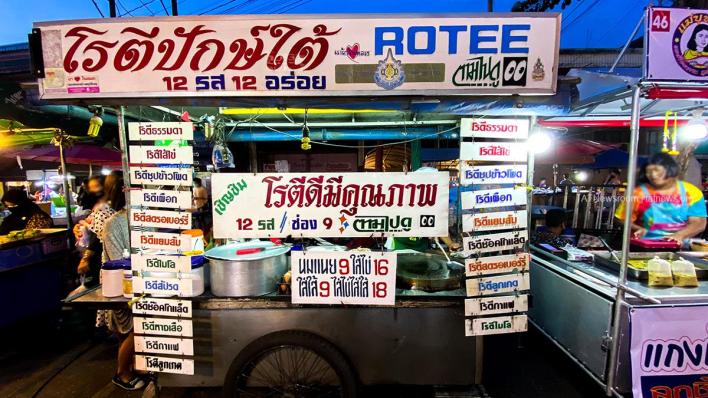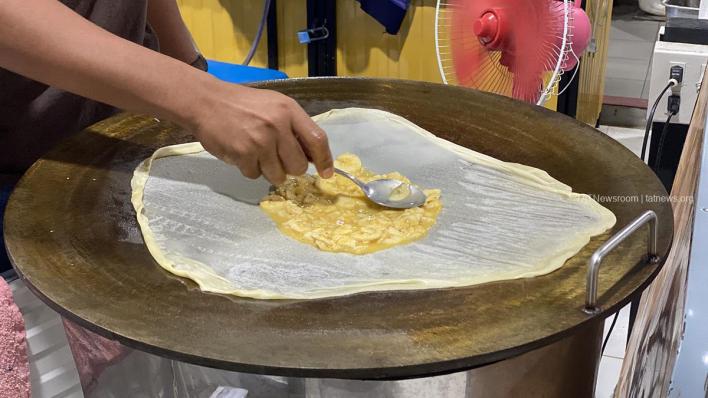Bangkok, 15 June, 2021 – Experiencing street food in Thailand is a given for any trip to the Kingdom. Visitors and residents alike have no shortage of choice when buying fresh, made-to-order Thai food straight from the source. Having many hot off-the-grill options makes enjoying street food the ideal format for savouring many of the dishes that are a fundamental part of the Thai food culture.
From early in the morning until late at night, vendors can be found preparing everything from noodles to ice cream from their custom-made carts on the streetside. The carts themselves are often a part of the charm, regularly as inventive and colourful as the food being made. It is common to find makeshift mobile kitchens built around a motorcycle and more simplistic pop-up canteens built onto the front of homes in residential areas.
In busier and more population-dense places like Bangkok, the small size of the living space makes it practical to eat street food several times per week, as most condominiums and small apartments only have a partial kitchen. It is also much more time-consuming to buy ingredients from a local market or grocery store and prepare food at home than to order some fresh food on the street, which usually takes just a few minutes.
Cost is another key reason why street food remains one of the most practical options for eating in Thailand. Sourcing local ingredients and preparing meals at home can easily cost far more than ordering a meal on the street, most of which range from just 30-70 Baht.
The prevalence of street food in Thailand has made way for many of the Kingdom’s annual food festivals; such as, the Vegetarian Food Festival (Tesakan Kin Je), which showcases plant-based food that has been adapted to Thai cuisine. Additionally, most night markets have sections dedicated entirely to chowing down on the large variety of street food being offered.
Street food spotlight: Boat Noodles & Roti
Personal favourite selections of Thai street food are just that: personal. Every person has a different response when asked which dish is the best, and these responses will vary by place as the food transforms in different regions. There have been novels and epic cookbooks written about the intricacies of Thai street food, its origins, and its impact on Thai society.
That said, a couple of staples should be highlighted as essential parts of the Thai street food culture.
GOT NEWS? click here
Google News, Bing News, Yahoo News, 200+ publications
First, boat noodles. Also known as “Kuai Tiao Ruea,” these small bowls of either rice vermicelli or yellow egg noodles are served hot with either beef, pork, or the infamous fish balls. Typically, they come in small bowls costing 20 Baht or less and are most famously found near the Victory Monument area of Bangkok.
For dessert, one of the most famous street desserts is Roti, a crispy, pan-fried dough that is usually topped with a fried egg before being drizzled with sweetened condensed milk or other toppings; such as, chocolate, bananas, and other savoury snacks. A fresh-made roti usually costs 30-40 Baht and is washed down best with a cold glass of Thai milk tea.
In recent years, street food has begun to graduate from being small mom-and-pop pushcarts to joining the ranks of the MICHELIN guide.
The most notable street food chef in Thailand is the two-time MICHELIN star recipient and master of the crab omelette, Bangkok’s street food chef Supinya ‘Jay Fai’ Junsuta. However, since she received her accolades from MICHELIN and beyond, several other street food vendors have also been given recognition.
Ban Yai Phat Thai, a family-owned and operated noodle shop, for example, is on a mission to serve delicious food while also making it accessible for the hearing impaired. Ban Yai Phat Thai received the MICHELIN Bib Gourmand in 2020 and is poised to continue its growth, as demonstrated by the daily three-hour queues to try their noodles.








